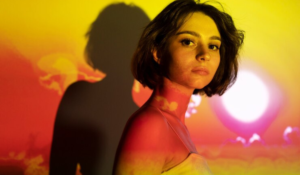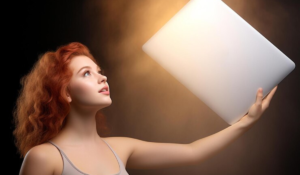The Ultimate Guide to Softboxes: The Anatomy of Light Shaping Tools

With their precision and versatility, softboxes have become indispensable tools for photographers. If you want to achieve desired lighting effects in your photography, you must understand the anatomy and functionality of softboxes. From their shapes and accessories to their working principles and practical applications, we’ll cover all aspects of softboxes in this comprehensive guide.
Softboxes: An Introduction

The softbox is a popular light modifier shaped like a box that produces soft, diffused light, which is ideal for a variety of photography applications. Photographers, videographers, and filmmakers alike use softboxes to create flattering light and smooth shadows. They are indispensable for capturing professional-quality images in a variety of situations due to their versatility and effectiveness.
Softbox shapes
Various types of softboxes exist, each with its own unique characteristics and advantages. The most common shapes of softboxes are square, rectangular, strip, octagonal, and deep. Depending on the shape, each light offers distinct lighting characteristics. Squares and rectangles, for example, provide even illumination with gradated shadow edges, making them ideal for portrait and product photography. For edge lighting and full-body portraits, strip softboxes create an elongated, narrow light source.
The accessories for softboxes

Various accessories can be added to softboxes to modify and control the light output in addition to their basic structure. The use of grids, stripmasks, round masks, and custom masks enables photographers to shape the light according to their creative vision. Grids control the direction and spread of light, while masks can create unique lighting effects. Photographers can achieve a wide range of lighting effects and styles by experimenting with different accessories.
Principles of operation
Softboxes work by diffusing light through multiple layers of material. There are three main components of a softbox: the outer shell, the inner baffle, and the diffusion panel. As the light passes through the layers of material in the softbox, it diffuses, resulting in soft, even illumination with smooth shadow transitions. As diffusers are placed closer or further apart, the light will diffuse more softly.
Softboxes: Applications
Softboxes can be used for a wide range of photography applications. Photographers can use softboxes for a variety of purposes, including portraits, fashion, product, and automotive photography. In any lighting environment, softboxes allow you to achieve professional-quality results, whether you are shooting in a studio or on location.
Sizes recommended for softboxes
When selecting a softbox, it’s important to consider its size and quality. One-by-6 stripboxes, four-by-six softboxes, two-by-two square softboxes, and three-by-three octas are all popular softbox sizes. Elinchrom, Broncolor, and Profoto are some of the quality brands that deliver consistent performance and reliability. With the right size and brand, photographers can achieve high-quality images with minimal post-processing by ensuring optimal lighting conditions.
Final thoughts
Using softboxes effectively requires a combination of knowledge, experimentation, and creativity. Photographers can achieve professional-quality results in their photography by understanding the anatomy and function of softboxes. If you’re a beginner or an experienced artist, softboxes offer endless creative possibilities. Don’t forget about your trusty softbox next time you’re setting up your lighting rig, and explore the endless possibilities it offers for shaping light and creating stunning images.



